I am trying to create a watertight mesh out of point cloud representing organ contour data from cone beam CT images. My goal is to take two meshes and calculate the volume of intersection between the two of them.
I have tried using each of the methods shown here
Poisson Reconstruction
point_cloud = np.genfromtxt('ct_prostate_contour_data.csv', delimiter=',')
pcd = o3d.geometry.PointCloud()
pcd.points = o3d.utility.Vector3dVector(point_cloud)
pcd.compute_convex_hull()
pcd.estimate_normals()
pcd.orient_normals_consistent_tangent_plane(10)
mesh = o3d.geometry.TriangleMesh.create_from_point_cloud_poisson(pcd, depth=10, width=0, scale=20, linear_fit=True)[0]
mesh.compute_vertex_normals()
mesh.paint_uniform_color([0.5, 0.5, 0.5])
mesh.remove_degenerate_triangles()
o3d.visualization.draw_geometries([pcd, mesh], mesh_show_back_face=True)
While this method seemingly leads to a watertight mesh to my eye, the result of mesh.is_watertight() is False, however for the Bladder data it returns True. Furthermore, the algorithm extends the mesh above and below the vertical limits of the data. Wile this isn't a deal breaking issue if there were a way to minimize it that would be great.
Poisson Mesh Image

Ball Pivoting
point_cloud = np.genfromtxt('ct_prostate_contour_data.csv', delimiter=',')
pcd = o3d.geometry.PointCloud()
pcd.points = o3d.utility.Vector3dVector(point_cloud)
pcd.compute_convex_hull()
pcd.estimate_normals()
pcd.orient_normals_consistent_tangent_plane(30)
distances = pcd.compute_nearest_neighbor_distance()
avg_dist = np.mean(distances)
radii = [0.1*avg_dist, 0.5*avg_dist, 1*avg_dist, 2*avg_dist]
r = o3d.utility.DoubleVector(radii)
rec_mesh = o3d.geometry.TriangleMesh.create_from_point_cloud_ball_pivoting(pcd, r)
o3d.visualization.draw_geometries([pcd, rec_mesh], mesh_show_back_face=True)
This would be my preferred method if I were able to fill the holes as it simply connects vertices without interpolation. Perhaps if I were able to get this into a state where the only remaining holes were large I could convert this mesh into a Pyvista compatible mesh and use Pymeshfix to patch the holes.
Ball Pivoting Mesh Image

Alpha Shapes
point_cloud = np.genfromtxt('ct_prostate_contour_data.csv', delimiter=',')
pcd = o3d.geometry.PointCloud()
pcd.points = o3d.utility.Vector3dVector(point_cloud)
alpha = 8
tetra_mesh, pt_map = o3d.geometry.TetraMesh.create_from_point_cloud(pcd)
mesh = o3d.geometry.TriangleMesh.create_from_point_cloud_alpha_shape(pcd, alpha, tetra_mesh, pt_map)
mesh.compute_vertex_normals()
mesh.paint_uniform_color([0.5, 0.5, 0.5])
mesh.remove_degenerate_triangles()
o3d.visualization.draw_geometries([pcd, mesh])
The results from this are similar to ball pivoting but worse.
Alpha Shapes Mesh Image

